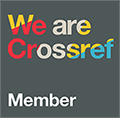Examination of Middle School Mathematics Curriculum and Textbooks in terms of Guiding the Use of Information and Communication Technologies
DOI:
https://doi.org/10.33308/26674874.2024382623Keywords:
Middle School Math Textbooks, Information and Communication Technologies, Document Analysis, Middle School Mathematics Curriculum, Mathematics EducationAbstract
The aim of this study is to examine the 2018 Middle School Mathematics Curriculum (OMDÖK) and the 2021 Middle School Mathematics Textbooks (OMDK), which have been approved by Talim Terbiye for five years of use in Turkey, in terms of their orientation to information and communication technologies (ICT). Document analysis, one of the qualitative research methods, was used in the research. In the first stage of the analysis, the objectives included in the 2018 OMDÖK that were suitable for orientation to the use of ICT were identified, and these identified objectives were subjected to descriptive analysis according to grade level and learning areas. In the second stage of the research, the questions, activities, problems, and explanations related to the use of ICT in the OMDÖK were subjected to descriptive analysis according to the learning area, sub learning area, and objectives specified in the OMDÖK, and content analysis according to the type of ICT tools and their purposes of use, and their frequencies were calculated. In this review, ICT orientation was found in 21 objectives in OMDÖK 2018, and it was determined that these orientations were in the areas of geometry and measurement, data analysis, and algebra. In addition, it has been determined that the use of ICT tools in the OMDÖK is quite low (between 1% and 5%), and mostly at the eighth-grade level and in the learning area of geometry and measurement. It was found that the most common ICT tools in middle school mathematics textbooks are mathematical software and scientific calculators, and these tools are used to explain information, then build concepts and do exercises.
Downloads
References
Amet, E. İ. (2021). Türkiye ve Yunanistan ortaokul matematik öğretim programlarının karşılaştırılması [Yayımlanmamış yüksek lisans tezi]. Bursa Uludağ Üniversitesi.
Aspinwall, L., & Tarr, J. E. (2001). Middle school students’ understanding of the role sample size plays in experimental probability. Journal of Mathematical Behavior, 20, 229-245. https://doi.org/10.1016/S0732-3123(01)00066-9 DOI: https://doi.org/10.1016/S0732-3123(01)00066-9
Bray, A., & Tangney, B. (2017). Technology usage in mathematics education research–A systematic review of recent trends. Computers Education and Information Technologies, (114), 255-273. https://doi.org/10.1016/j.compedu.2017.07.004 DOI: https://doi.org/10.1016/j.compedu.2017.07.004
Bowen, G. A. (2009). Document analysis as a qualitative research method. Qualitative Research Journal, 9(2), 27-40. https://doi.org/10.3316/QRJ0902027 DOI: https://doi.org/10.3316/QRJ0902027
Cohen, J. (1960). A coefficient of agreement for nominal scales, Educational and Psychological Measurement, 20(1), 37-46. https://doi.org/10.1177/001316446002000104 DOI: https://doi.org/10.1177/001316446002000104
Swedish National Agency for Education. (2023, December 24). Curriculum for the compulsory school, preschool class and school-age educare, 2011 Revised 2018. https://www.skolverket.se/download/18.31c292d516e7445866a218f/1576654682907/pdf3984.pdf
Demir-Ataş, B. (2022). Tayvan-Türkiye 5-8. sınıf matematik öğretim programı karşılaştırmalı analizi [Yayınlanmamış yüksek lisans tezi]. Gaziantep Üniversitesi.
Drijvers, P. (2015). Digital technology in mathematics education: Why it works (or doesn’t). In S. J. Cho (Ed.), Selected regular lectures from the 12th International Congress on Mathematical Education (pp.135-151). Springer International Publishing. https://doi.org/10.1007/978-3-319-17187-6_8 DOI: https://doi.org/10.1007/978-3-319-17187-6_8
Ekmen, C., & Bakar, E. (2019). İlköğretimde öğretim programları ve ders kitaplarında dijital yetkinliğin yeri. Milli Eğitim Dergisi, 48(221), 5-35.
Erbilge, A. E. (2019). Türkiye, Kanada ve Hong Kong’un ortaokul matematik öğretim programlarının karşılaştırılması [Yayınlanmamış doktora tezi]. Marmara Universitesi.
Haggarty, L., & Pepin, B. (2002). An investigation of mathematics textbooks and their use in English, French and German classrooms: Who gets an opportunity to learn what? British Educational Research Journal, 28(4), 567-590. https://doi.org/10.1080/0141192022000005832 DOI: https://doi.org/10.1080/0141192022000005832
İmre, S. Y., Ökmen, E., & Bozkurt, B. (2022). Ortaokul matematik dersi öğretim programlarındaki problem çözmeye ilişkin açıklamaların sosyomatematiksel normlar çerçevesinde incelenmesi. Milli Eğitim Dergisi, 51(233), 603-621. https://doi.org/10.37669/milliegitim.802728 DOI: https://doi.org/10.37669/milliegitim.802728
Kandemir, M. A., & Yildiz, Y. (2019). Conceptual frameworks used in the analysis of middle school mathematics textbooks. Necatibey Faculty of Education Electronic Journal of Science Mathematics Education, 13(2), 1273-1304. https://doi.org/10.17522/balikesirnef.646009 DOI: https://doi.org/10.17522/balikesirnef.646009
Kayaduman, H., Sırakaya, M., & Seferoğlu, S. S. (2011, Şubat). Eğitimde FATİH projesinin öğretmenlerin yeterlik durumları açısından incelenmesi. Akademik Bilişim Konferansı (Tam metin Bildiri), İnönü Üniversitesi, Malatya. https://www.researchgate.net/profile/Halil-Kayaduman/publication/259383916_Egitimde_FATIH_Projesinin_Ogretmenlerin_Yeterlik_Durumlari_Acisindan_Incelenmesi/links/5756e85e08ae04a1b6b670dc/Egitimde-FATIH-Projesinin-Oegretmenlerin-Yeterlik-Durumlari-Acisindan-Incelenmesi.pdf.
Mersin, N., & Karabörk, M. A. (2021). The comparison of math textbooks in Turkey and Singapore in terms of technology ıntegration. International Journal of Curriculum and Instruction, 13(1), 552-573.
Milli Eğitim Bakanlığı [MEB]. (1949). İlköğretim matematik dersi 5-8. Sınıflar öğretim programı kılavuzu. Talim ve Terbiye Kurulu Başkanlığı.
Milli Eğitim Bakanlığı [MEB]. (1990). İlköğretim matematik dersi 5-8. Sınıflar öğretim programı kılavuzu. Talim ve Terbiye Kurulu Başkanlığı.
Milli Eğitim Bakanlığı [MEB]. (2012). İlköğretim matematik dersi 5-8. Sınıflar öğretim programı kılavuzu. Talim ve Terbiye Kurulu Başkanlığı.
Milli Eğitim Bakanlığı [MEB]. (2018). İlköğretim matematik dersi 5-8. Sınıflar öğretim programı kılavuzu. Talim ve Terbiye Kurulu Başkanlığı.
Mullis, I. V., Martin, M. O., Foy, P., & Arora, A. (2012). TIMSS 2011 international results in mathematics: TIMSS & PIRLS. International Study Center.
Pepin, B., & Haggarty, L. (2001). Mathematics textbooks and their use in English, French and German classrooms: A way to understand teaching and learning cultures. Zentralblatt für Didaktik der Mathematik, (33), 158-175. https://doi.org/10.1007/BF02656616 DOI: https://doi.org/10.1007/BF02656616
Radović S., Radojičić M., Veljković K., & Marić M. (2020). Examining the effects of Geogebra applets on mathematics learning using interactive mathematics textbook. Interactive Learning Environments, 28(1), 32-49, https://doi.org/10.1080/10494820.2018.1512001 DOI: https://doi.org/10.1080/10494820.2018.1512001
Sak, R., Şahin–Sak İ.T., Öneren-Şendil, Ç., & Nas, E. (2021). Bir araştırma yöntemi olarak doküman analizi. Kocaeli Üniversitesi Eğitim Dergisi, 4(1), 227-256. https://doi.org/10.33400/kuje.843306 DOI: https://doi.org/10.33400/kuje.843306
Reed, H. C., Drijvers, P., & Kirschner, P. A. (2010). Effects of attitudes and behaviours on learning mathematics with computer tools. Computers Education and Information Technologies, 55(1), 1-15. https://doi.org/10.1016/j.compedu.2009.11.012 DOI: https://doi.org/10.1016/j.compedu.2009.11.012
Sangrà, A., & González-Sanmamed, M. (2010). The role of information and communication technologies in improving teaching and learning processes in primary and secondary schools. Research in Learning Technology, 18 (3), 207 – 220. https://doi.org/10.1080/09687769.2010.529108 DOI: https://doi.org/10.1080/09687769.2010.529108
Sevimli, E., & Kul, Ü. (2015). Matematik ders kitabı içeriklerinin teknolojik uygunluk açısından değerlendirilmesi: Ortaokul örneği. Necatibey Eğitim Fakültesi Elektronik Fen ve Matematik Eğitimi Dergisi, 9(1), 308-331. https://doi.org/10.17522/nefefmed.11253 DOI: https://doi.org/10.17522/nefefmed.11253
Stohl, H. (2005). Probability in teacher education and development. In G.A. Jones (Ed.), Exploring probablity in school: Challenges for teaching and learning (pp.345-366). Springer. https://doi.org/10.1007/0-387-24530-8_15 DOI: https://doi.org/10.1007/0-387-24530-8_15
Tural Sönmez, M., & Aytekin, C. (2021). Olasılık öğretiminde simülasyon kullanımı. S. Baltacı & S.Ö. Bütüner (Eds), Etkinlik temelli olasılık ve istatistik öğretimi (1. Baskı) içinde (s.87-116. Nobel Akademik Yayıncılık.
Ulusoy, F., & İncikabı, L. (2020). Middle school teachers' use of compulsory textbooks in instruction of mathematics. International Journal for Mathematics Teaching and Learning, 21(1), 1-18. https://doi.org/10.4256/ijmtl.v21i1.227 DOI: https://doi.org/10.4256/ijmtl.v21i1.227
Ural, A. (2015). Ortaokul matematik öğretmenlerinin bilgi iletişim teknolojisi ve psikomotor beceri kullanımlarının incelenmesi. Turkish Journal of Computer and Mathematics Education, 6(1), 93-116. https://doi.org/10.16949/turcomat.51343
Downloads
Published
How to Cite
Issue
Section
License
Copyright (c) 2024 Journal of Education for Life

This work is licensed under a Creative Commons Attribution-NonCommercial-NoDerivatives 4.0 International License.
I accept that the Owner of Journal of Education for Life, the Editor, Associate Editors, Reviewers and the Editorial Board cannot be hold responsible regarding the scope, the findings, the discussion and conclusion of the manuscript submitted.
I declare to the editorship of Journal of Education for Life that the manuscript is original and has not been published anywhere else or is not under evaluation process for any other journal.
I approve that I grant Journal of Education for Life as the sole and exclusive right and license to publish for the full legal term of copyright of my manuscript concurring with article 5846 / 22-23-25 while I retain copyright in the work.





